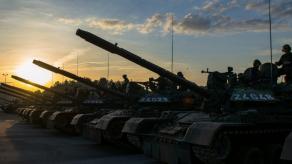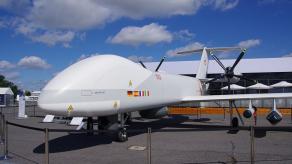The UK-based Royal United Services Institute (RUSI) has published an article on the characteristics of the russian 3M22 "Zircon" hypersonic anti-ship missile that russia is trying to threaten the USA with.
For instance, the russian defense ministry boasted about the successful "digital launch" of such a missile from the "Admiral Gorshkov" frigate. The warship is reportedly cruising toward the USA shores.
Read more: The russian federation Will Mass-Produce Another "Wundermissile" Which Won’t Be Able to Hit Ukraine

However, this "digital launch" means a computer modeling of the process without physical launch of the missile. Consequently, if the russians try to represent this as a breakthrough of their weapon industry, it hints there might be issues with the Zircon's combat use performance.
With that in mind, RUSI suggests that the importance of Zircon should not be overstated, especially by the USA and other Western countries. Although the deployment of a warship armed with hypersonic missiles is still a noteworthy event.
For starters, RUSI authors tried to find out what is the technological base of the russian "Zircon", and the general picture of it actually looks contradictory.
For example, in Soviet times, there was a project of the Kh-90 hypersonic cruise missile designed for a launch from strategic bombers. But this project never reached even the prototype creation stage.

From the declared start of development to official deployment of the "Zircon" missile, a little more than 10 years passed. This term seems too "record-breaking" for the russian military industry, especially if we recall the timing of other similar developments that took much longer to implement.
For comparison, the russians set to work on the Kh-32 modernized supersonic cruise missile project in the 1980s and finished it basically in 2022.
Around the same period of 10 years was needed for the russians to develop and adopt the P-800 "Oniks" supersonic anti-ship cruise missile. But this was exactly the case when "fast does not mean good", because the russian military themselves recognized the fact their "Oniks" had "childhood diseases", as described by one of their generals.

Given that, the analysts doubt whether Zircon was ever really fielded by russia: in some cases, the Kremlin's "claimed footage of test launches that were later identified as other missiles such as the P-800," as noted by the authors. The P-800 are of the same size as the 3M22 Zircon, and some of the performance characteristics turned out to be identical as well.
There is another important contradiction noted by RUSI: during the tests russian military official claimed that their "Zircon" has an actual firing range of up to 400 km at a flight speed of up to Mach 6 and a warhead weight of 300 kg. Later though, the Kremlin's Putin announced that the 3M22 apparently has a firing range of almost 1,000 km at a flight speed of up to Mach 9, with the same warhead weight of 300 kg.
Even the less bold claims about 400 km and Mach 6 look too good for the "Zircon". The authors state that for such performance, the missile would need at least twice as effective fuel than the one used for P-800 "Oniks" that has a maximum speed of 3,200 km/h.
"Given the history of Russian and Soviet leaders exaggerating the capabilities at their disposal to strengthen their diplomatic hands, this should be considered," reads the article.

Lastly, RUSI assessed how can Zircon be applied in practice. And it's the natural physical limitations that may "constrain the missile’s effectiveness against mobile platforms." The thing is, hypersonic missiles travel at such high speed they ionise the air around them and generate a plasma layer which interferes with the missile's ability to use either internal homing or external guidance systems. All that is left is the inertial guidance with pre-entered data on target location which could be still effective against stationary targets but have use against moving ones, especially against ships.
For its engine to operate in stable mode, the hypersonic missile must move for most of its flight path at an altitude of about 20 km. It is only this way that allows to pump up the proper air pressure level inside the engine. Consequently, the flight speed of the same "Zirkon" on the terminal stage can drop to no higher than the same P-800 missile has. And this means that the russian 3M22 is not as vulnerable to the Western anti-aircraft defense systems as the Kremlin constantly claims.
Read more: Turkiye Looks Forward to an Anti-Ship Missile Remade Against Ground Targets














